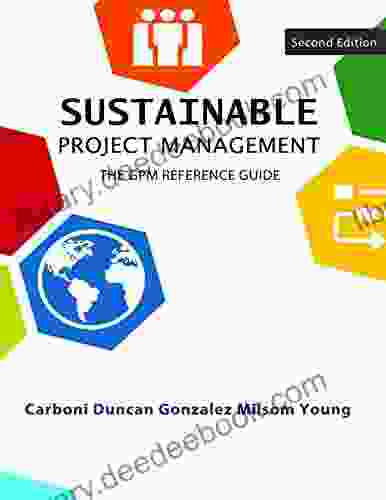Wetlands and Habitats: A Comprehensive Guide to Their Ecological Significance and Conservation

Wetlands and habitats are vital components of the Earth's ecosystems, supporting a vast array of plant and animal life and providing essential services to humans. From filtering water and mitigating floods to providing breeding grounds for fish and wildlife, these areas are vital to the health of our planet. However, wetlands and habitats are under increasing threat from human activities such as development, agriculture, and pollution. This article aims to provide a comprehensive guide to the ecological significance of wetlands and habitats and the importance of their conservation.
What are Wetlands?
Wetlands are areas where water covers the soil or is present at or near the surface for at least part of the year. They include a wide variety of habitats, such as marshes, swamps, bogs, and fens. Wetlands are often found in low-lying areas, such as river floodplains and coastal areas, but they can also occur in upland areas.
5 out of 5
| Language | : | English |
| File size | : | 148461 KB |
| Print length | : | 294 pages |
Ecological Significance of Wetlands
Wetlands provide a number of important ecological services, including:
* Water filtration: Wetlands act as natural filters, removing pollutants from water and improving water quality. * Flood mitigation: Wetlands help to slow down the flow of water during floods, reducing the risk of flooding in downstream areas. * Groundwater recharge: Wetlands help to replenish groundwater supplies by allowing water to infiltrate the ground. * Habitat for wildlife: Wetlands provide habitat for a wide variety of plant and animal species, including fish, birds, reptiles, and amphibians. * Carbon sequestration: Wetlands store carbon dioxide, helping to mitigate climate change.
Types of Wetlands
There are many different types of wetlands, each with its own unique characteristics. Some of the most common types of wetlands include:
* Marshes: Marshes are wetlands that are dominated by herbaceous plants, such as grasses, sedges, and rushes. * Swamps: Swamps are wetlands that are dominated by trees and shrubs. * Bogs: Bogs are wetlands that are characterized by acidic water and a thick layer of peat moss. * Fens: Fens are wetlands that are characterized by alkaline water and a rich diversity of plant life.
What are Habitats?
Habitats are the places where plants and animals live. They provide the food, water, shelter, and other resources that organisms need to survive. Habitats can be as small as a single tree or as large as an entire ecosystem.
Ecological Significance of Habitats
Habitats are essential for the survival of all living things. They provide the resources that organisms need to survive and reproduce, and they help to maintain the balance of nature.
Some of the most important ecological services provided by habitats include:
* Food and water: Habitats provide food and water for plants and animals. * Shelter: Habitats provide shelter from the elements, predators, and other threats. * Breeding grounds: Habitats provide breeding grounds for many species of plants and animals. * Nurseries: Habitats provide nurseries for young plants and animals. * Corridors: Habitats can serve as corridors for movement of plants and animals.
Types of Habitats
There are many different types of habitats, each with its own unique characteristics. Some of the most common types of habitats include:
* Forest habitats: Forest habitats are characterized by the presence of trees. They can be found in a variety of climates, from tropical rainforests to temperate forests. * Grassland habitats: Grassland habitats are characterized by the presence of grasses and other herbaceous plants. They can be found in a variety of climates, from savannas to prairies. * Wetland habitats: Wetland habitats are characterized by the presence of water. They can be found in a variety of locations, from coastal areas to inland marshes. * Desert habitats: Desert habitats are characterized by a lack of water. They can be found in a variety of locations, from hot deserts to cold deserts. * Tundra habitats: Tundra habitats are characterized by a cold climate and a lack of trees. They can be found in the Arctic and Antarctic regions.
Threats to Wetlands and Habitats
Wetlands and habitats are under increasing threat from human activities such as development, agriculture, and pollution.
* Development: Development can destroy or fragment wetlands and habitats, making them less suitable for plants and animals. * Agriculture: Agriculture can pollute wetlands and habitats with fertilizers and pesticides, and it can also lead to the conversion of wetlands and habitats to agricultural land. * Pollution: Pollution can harm plants and animals in wetlands and habitats, and it can also make the water unsafe for drinking.
Conservation of Wetlands and Habitats
It is important to conserve wetlands and habitats to protect the ecological services that they provide. There are a number of things that can be done to conserve wetlands and habitats, including:
* Protecting existing wetlands and habitats: One of the most important things that can be done to conserve wetlands and habitats is to protect existing areas from development and other threats. * Restoring degraded wetlands and habitats: Degraded wetlands and habitats can be restored to their former glory through a variety of techniques, such as planting native vegetation and removing invasive species. * Creating new wetlands and habitats: New wetlands and habitats can be created in a variety of ways, such as by restoring former wetlands or creating new ones from scratch. * Educating the public about the importance of wetlands and habitats: Educating the public about the importance of wetlands and habitats can help to build support for their conservation.
Wetlands and habitats are vital components of the Earth's ecosystems, supporting a vast array of plant and animal life and providing essential services to humans. From filtering water and mitigating floods to providing breeding grounds for fish and wildlife, these areas are vital to the health of our planet. However, wetlands and habitats are under increasing threat from human activities such as development, agriculture, and pollution. It is important to conserve wetlands and habitats to protect the ecological services that they provide.
5 out of 5
| Language | : | English |
| File size | : | 148461 KB |
| Print length | : | 294 pages |
Do you want to contribute by writing guest posts on this blog?
Please contact us and send us a resume of previous articles that you have written.
 Novel
Novel Page
Page Chapter
Chapter Text
Text Genre
Genre Library
Library Newspaper
Newspaper Paragraph
Paragraph Glossary
Glossary Bibliography
Bibliography Foreword
Foreword Annotation
Annotation Classics
Classics Library card
Library card Biography
Biography Autobiography
Autobiography Memoir
Memoir Reference
Reference Encyclopedia
Encyclopedia Dictionary
Dictionary Thesaurus
Thesaurus Character
Character Resolution
Resolution Librarian
Librarian Borrowing
Borrowing Archives
Archives Study
Study Scholarly
Scholarly Reserve
Reserve Academic
Academic Journals
Journals Reading Room
Reading Room Special Collections
Special Collections Interlibrary
Interlibrary Literacy
Literacy Dissertation
Dissertation Storytelling
Storytelling Awards
Awards Reading List
Reading List Textbooks
Textbooks Mathsticks
Mathsticks Col Robert Manns
Col Robert Manns Katalina Ramblewild
Katalina Ramblewild Eleni Kounalakis
Eleni Kounalakis Lisa Yee
Lisa Yee Joel Spring
Joel Spring Bob Costello
Bob Costello Jean Baptiste Coyos
Jean Baptiste Coyos Nick Ryan
Nick Ryan Joshua Plenert
Joshua Plenert Kathleen Benner Duble
Kathleen Benner Duble Baby Professor
Baby Professor Dmitri Levitin
Dmitri Levitin Led Zeppelin
Led Zeppelin Roland Pietsch
Roland Pietsch Diane Duane
Diane Duane Brian T Bennett
Brian T Bennett Helen Rolfe
Helen Rolfe Barbara Hambly
Barbara Hambly Eliza Graham
Eliza Graham
Light bulbAdvertise smarter! Our strategic ad space ensures maximum exposure. Reserve your spot today!

 Neil ParkerDelving into the Realm of Topology: A Comprehensive Guide to Basic Concepts...
Neil ParkerDelving into the Realm of Topology: A Comprehensive Guide to Basic Concepts... Griffin MitchellFollow ·4.4k
Griffin MitchellFollow ·4.4k W. Somerset MaughamFollow ·14.9k
W. Somerset MaughamFollow ·14.9k Emmett MitchellFollow ·6.4k
Emmett MitchellFollow ·6.4k Johnny TurnerFollow ·9.5k
Johnny TurnerFollow ·9.5k Boris PasternakFollow ·18.1k
Boris PasternakFollow ·18.1k Jonathan HayesFollow ·12.8k
Jonathan HayesFollow ·12.8k Scott ParkerFollow ·14.1k
Scott ParkerFollow ·14.1k VoltaireFollow ·10.3k
VoltaireFollow ·10.3k

 Ralph Ellison
Ralph EllisonHealth Care Global Viewpoints: Samantha Whiskey
Samantha Whiskey is a global health...

 Gabriel Garcia Marquez
Gabriel Garcia MarquezTeacher Educators' Reflections on Culturally Relevant...
In today's...

 Levi Powell
Levi PowellSustainable Project Management: The GPM Reference Guide...
In today's rapidly changing world,...

 Isaac Bell
Isaac BellThe Captivating World of "Dreaming Awake Falling Under"
A Journey Through...

 Clarence Brooks
Clarence BrooksGovernance Regulations Valuations Mergers And...
In today's complex and ever-changing...
5 out of 5
| Language | : | English |
| File size | : | 148461 KB |
| Print length | : | 294 pages |












